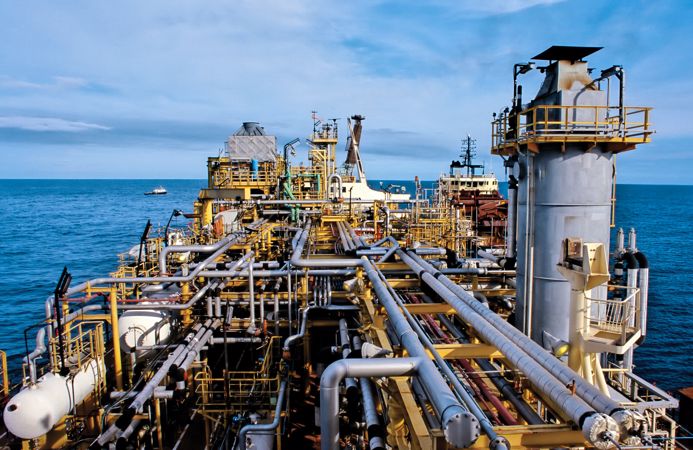Vibration and Integrity Engineering Division Deliver Flow-Induced Vibration Study for New Build FPSO

The Problem
Flow induced vibration (FIV) or flow induced turbulence (FIT) is an excitation source that can cause vibration in process piping systems. It is due to turbulence generated by the fluid flow, primarily at flow discontinuities such as bends, tees and reducers, and results in high levels of kinetic energy.
Excessive vibration can cause many undesirable conditions, but the primary concern is dynamic (cyclic) stress above the material's fatigue limit that can result in damage, failure and loss of containment.
Methodology
- A representative model of the piping geometry is created in ANSYS Finite Element Analysis package, using information from construction isometric drawings. Details of actual support engagement and reaction loads were gathered from the client's Caesar II pipe stress model.
- Modal analysis is performed to identify structural natural frequencies and mode shapes.
- Process flow information was taken from the appropriate heat and mass balance design case. This data is used to generate forcing functions that are applied at the piping flow discontinuities.
- Apply harmonic analysis to determine piping response to the applied forces and the resulting dynamic stresses at weld lines.
- Compare the predicted stress profile with the S-N curves for the relevant weld classes. If above the fatigue limit, a fatigue life was estimated and evaluated against the design life of the asset.
Benefits
Xodus FIV simulation and analysis allows clients at design and operational stages to identify vibration concern areas and estimate fatigue performance. We have a successful track record in delivering these projects for both topside and subsea piping systems, exposed to single and multi-phase flow regimes.
This pro-active approach can identify and mitigate potential fatigue failures, increasing safety and preventing loss of production and unplanned shutdown incidents, with their associated costs and emissions.